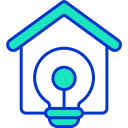The History and Future of Smart Home Devices
Smart home devices have evolved dramatically over the past few decades, transforming daily life and the way we interact with technology in our living spaces. Rooted in visions of convenience and automation, the journey from rudimentary household gadgets to today’s interconnected, intelligent ecosystems has been marked by groundbreaking innovation and cultural shifts. As we move into the future, the landscape for smart home devices promises even greater integration, intelligence, and personalization, redefining what it means to live in a connected world.
Early Beginnings of Home Automation
Long before the term “smart home” entered our vocabulary, households began to adopt automated appliances to ease daily chores. Electrical washers, automatic toasters, and programmable thermostats were among the earliest examples, providing efficiency and convenience never seen before. These devices, powered by simple mechanical or electronic controls, set the stage for imagining an interconnected, responsive home. Over time, their growing popularity demonstrated a persistent demand for tools that could anticipate and address everyday needs efficiently.

Previous
Next
Present-Day Innovations and Ecosystems
Artificial intelligence now plays a central role in smart home automation. Devices can learn from residents’ behaviors, anticipate needs, and optimize routines for energy efficiency, comfort, and convenience. Voice assistants powered by AI understand natural language and carry out complex instructions. Machine learning algorithms enable smart thermostats to maintain ideal temperatures automatically, while smart refrigerators can track groceries and suggest recipes. These AI-driven functions are transforming the passive home into a proactive, adaptive environment tailored to individual preferences.
A major challenge for the modern smart home has been achieving seamless interoperability between devices from different manufacturers. Initiatives such as Matter and industry-wide collaborations have begun to make significant headway toward creating unified standards. This progress means that increasingly, homeowners can mix and match devices from various brands with confidence that they will work harmoniously. Standardization not only encourages broader adoption but also simplifies installation, updates, and maintenance, setting the stage for a more cohesive smart home experience.
As production costs have dropped and device options have multiplied, smart home technology has become accessible to a much broader demographic. Entry-level products enable renters and homeowners to try out smart lighting, cameras, or speakers with minimal investment or infrastructure changes. Manufacturers are designing devices with intuitive controls and simplified installation, lowering the barriers for less tech-savvy users. This democratization is helping smart home benefits reach wider populations, contributing to increased energy savings, security, and comfort across diverse households.

